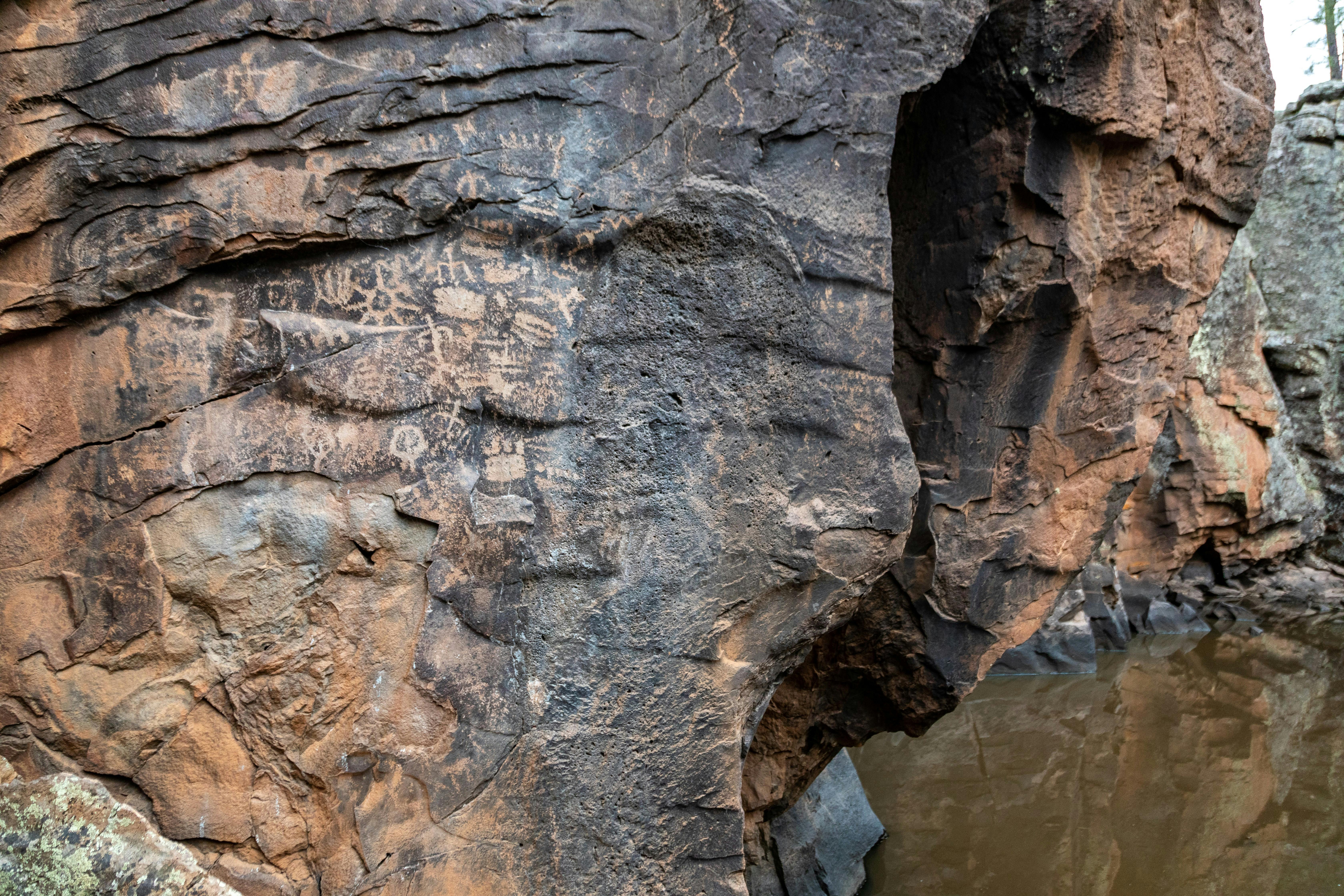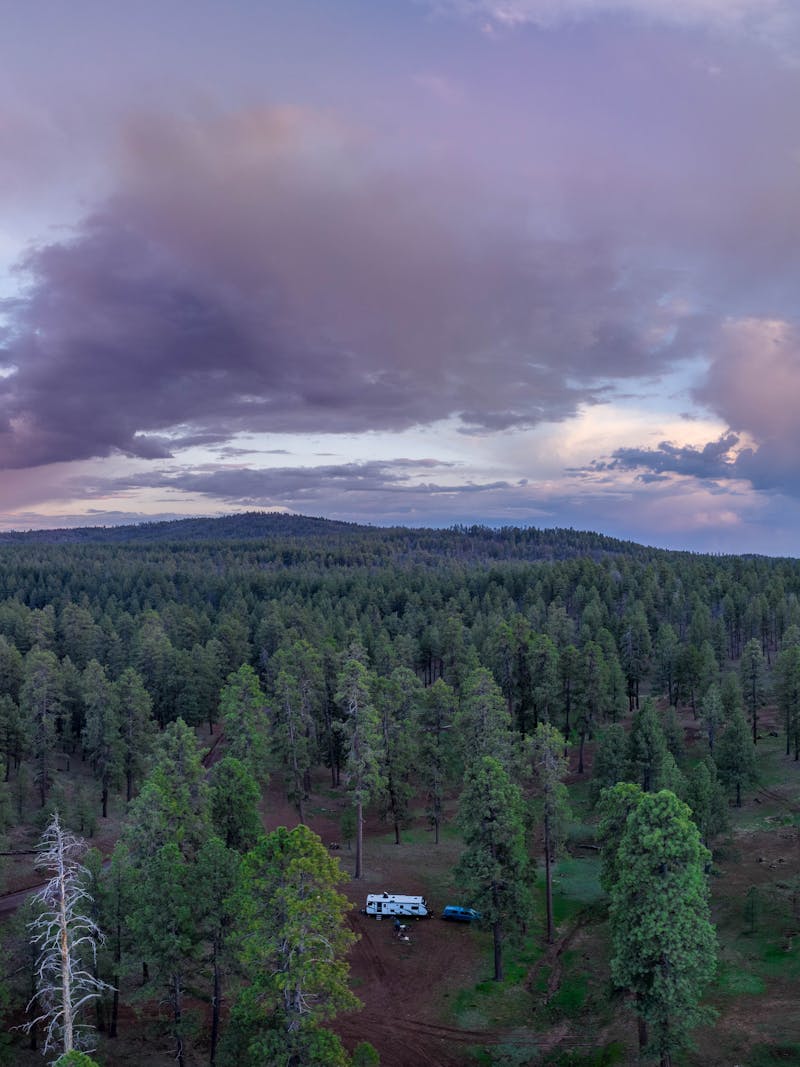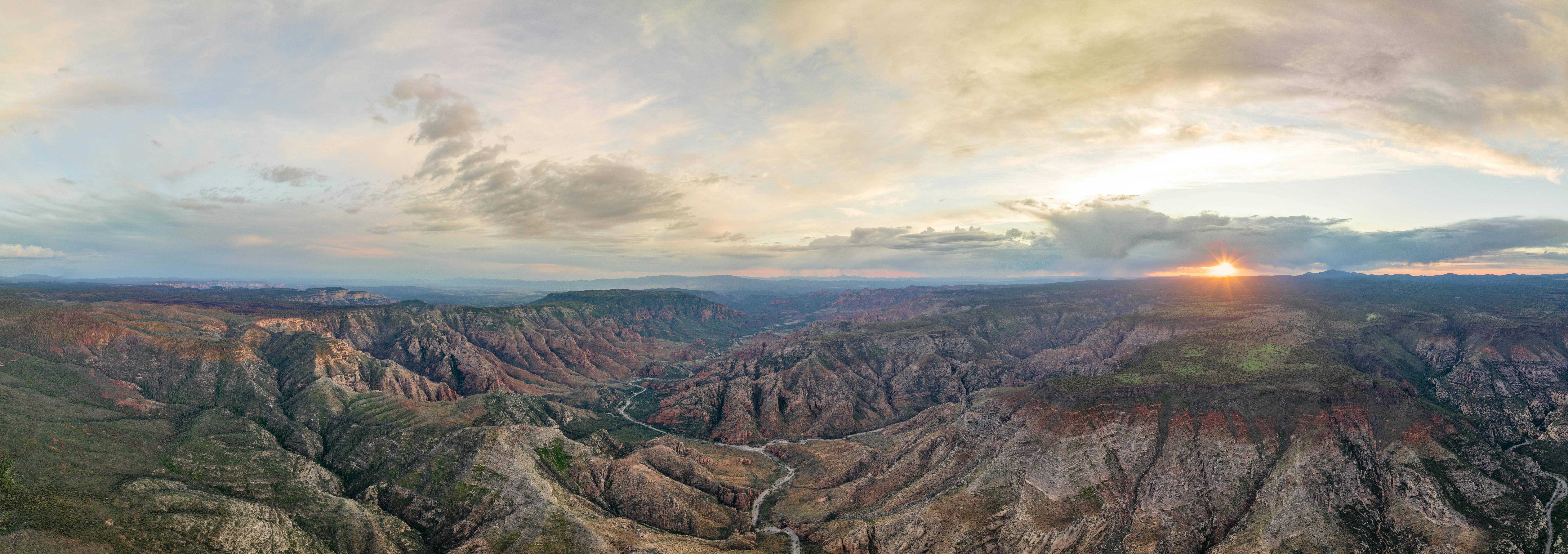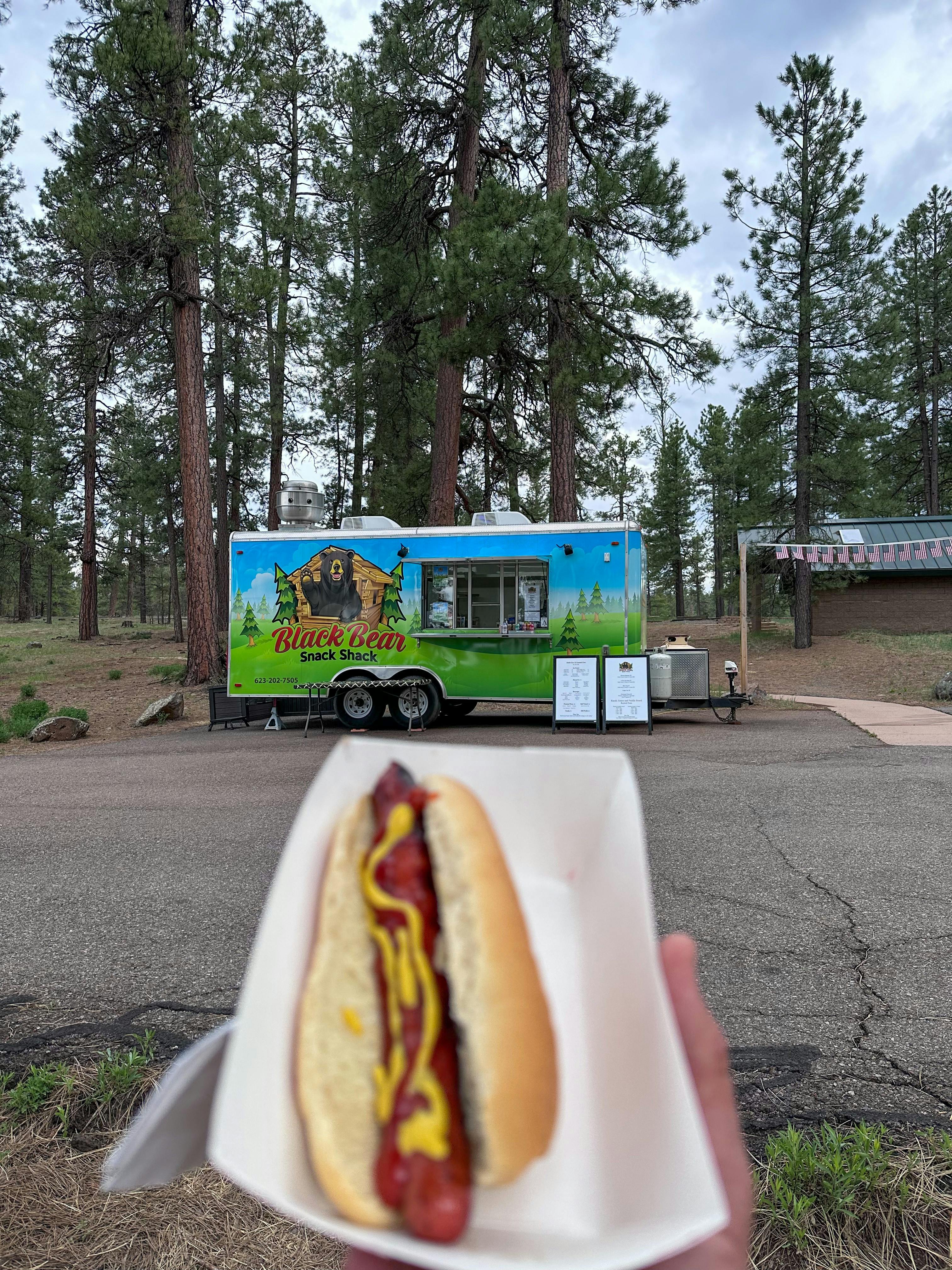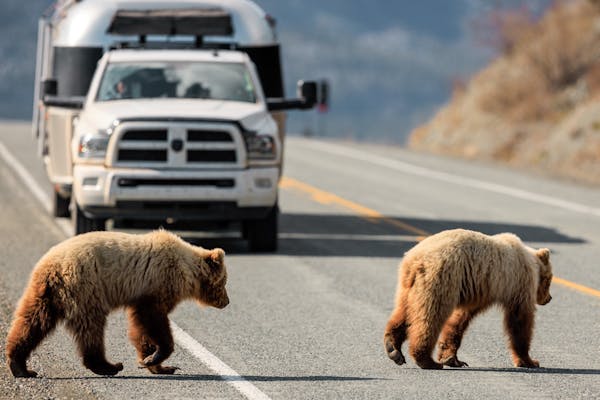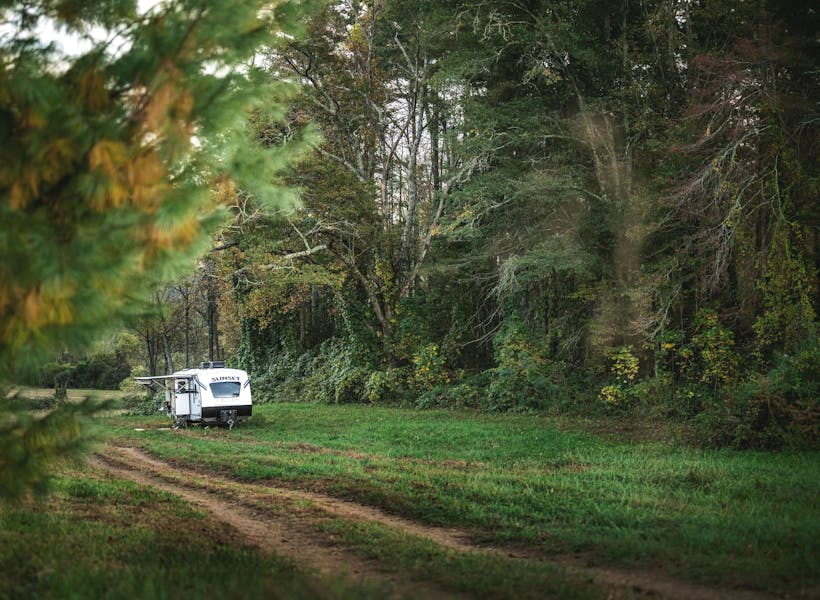Sycamore Canyon: A Wilderness Paradise
Sycamore Canyon, known as the crown jewel of Kaibab National Forest, beckons outdoor enthusiasts with its rugged trails and pristine wilderness. Hiking through the canyon rewards you with unparalleled views of towering cliffs, vibrant wildflowers, and diverse plant and animal life. The trail options cater to all levels of expertise, ensuring there is something for everyone. If you're up for a challenge, the 11-mile Sycamore Rim Trail offers a remarkable journey along the rim, revealing breathtaking vistas at every turn.
One of the most awe-inspiring viewpoints in Kaibab National Forest is Sycamore Point. Perched atop a lofty cliff, you are treated to a panoramic view of the surrounding wilderness, including the expansive Sycamore Canyon below. The dramatic vistas, characterized by deep canyons and rugged terrain, are a testament to the ancient forces of nature. This viewpoint was so amazing that I decided to visit it twice for sunset. I even grilled a delicious steak dinner and enjoyed it while gazing into the gorgeous Sycamore Canyon.
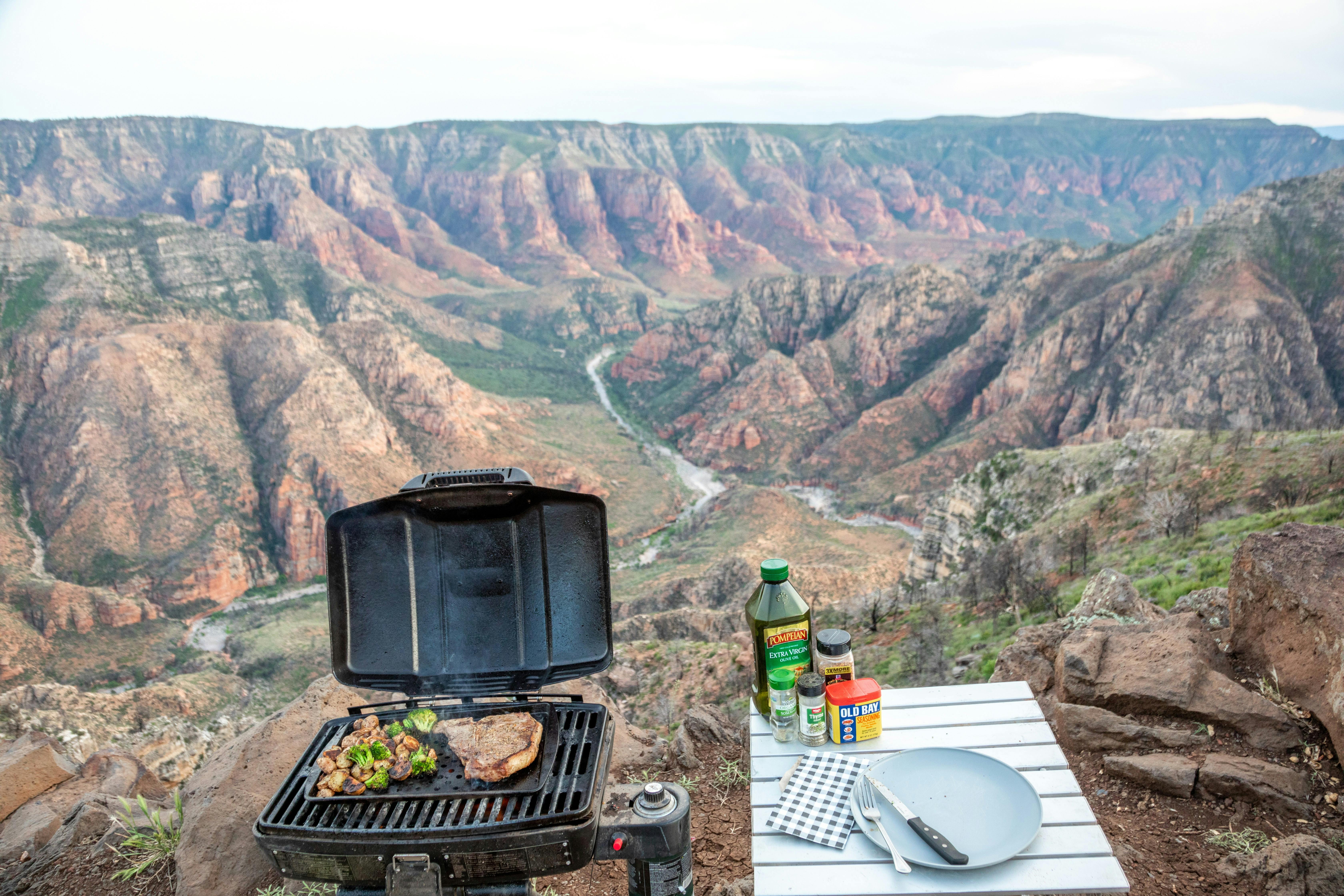
Sycamore Falls: A Picturesque Waterfall
For those seeking the soothing sounds of rushing water, Sycamore Falls is a must-visit destination within Kaibab National Forest. The falls, located within picturesque Sycamore canyon, offer a mesmerizing display of nature's power. During the spring snowmelt, the water cascades down the rocks, creating a breathtaking spectacle. Whether you choose to photograph the falls, enjoy a peaceful picnic nearby, or simply bask in the tranquility of the surroundings, Sycamore Falls is a hidden gem worth discovering. A quick half-mile walk through lava rocks and Ponderosa Pines will lead you right to the edge of this quiet canyon where you can peer into this natural wonder. If you’re unable to make it in the spring, time your visit after a heavy rain in monsoon season (June-August), otherwise it might not be flowing.
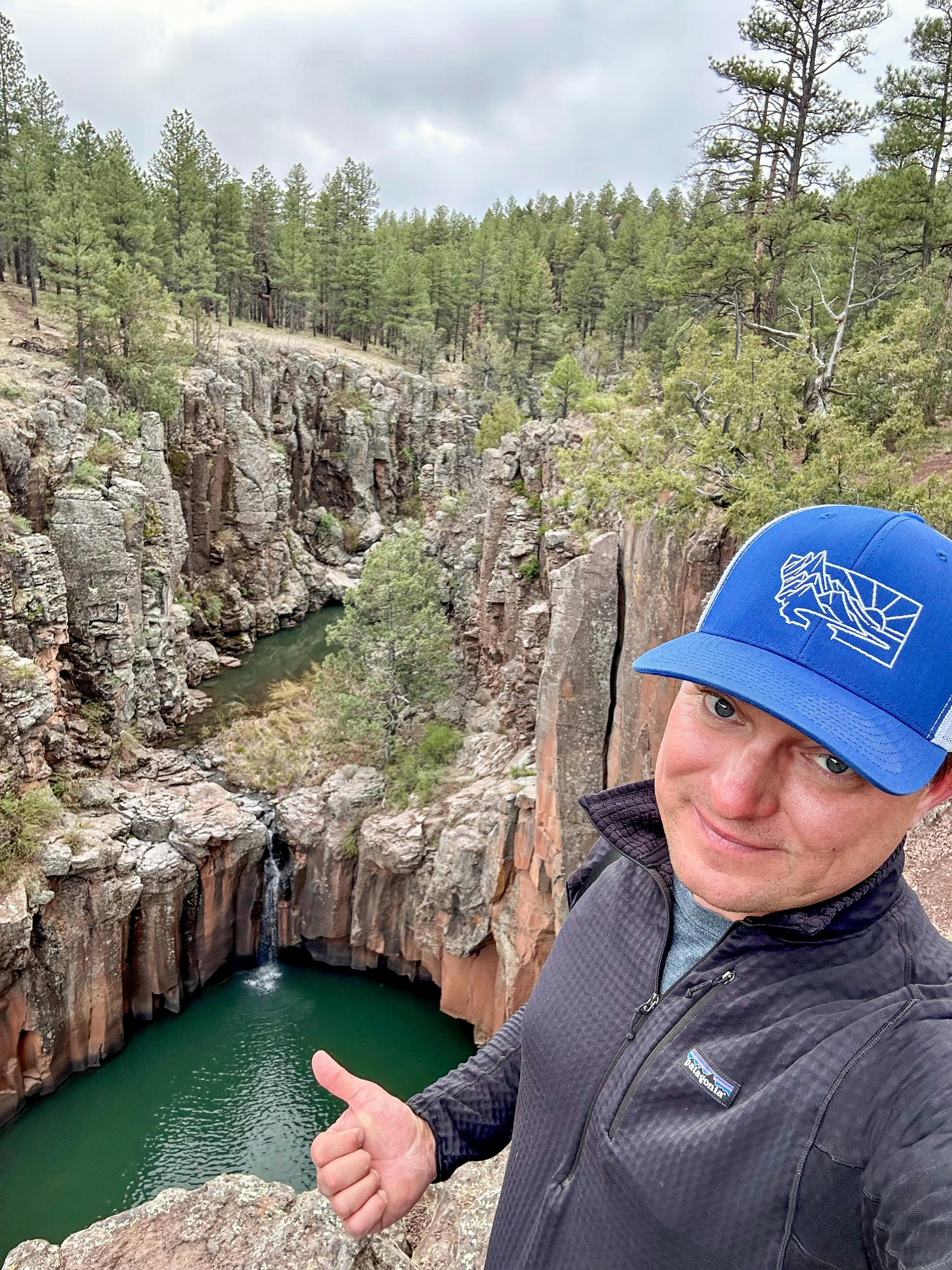
Keyhole Sink: An Ancient Hunting Ground
One of my favorite things about the Southwest is the rich ancient history and the natives who called this land home for centuries. A true hidden gem within Kaibab National Forest is Keyhole Sink, a unique geological formation a mile deep within the forest. Park at a small roadside pull-off and take the 2-mile round trip hike to this ancient gathering place. This sinkhole, formed by the dissolution of limestone over time, features an opening that resembles a keyhole. Keyhole Sink serves as an important watering hole for wildlife, making it an excellent spot for observing native species in their natural habitat.
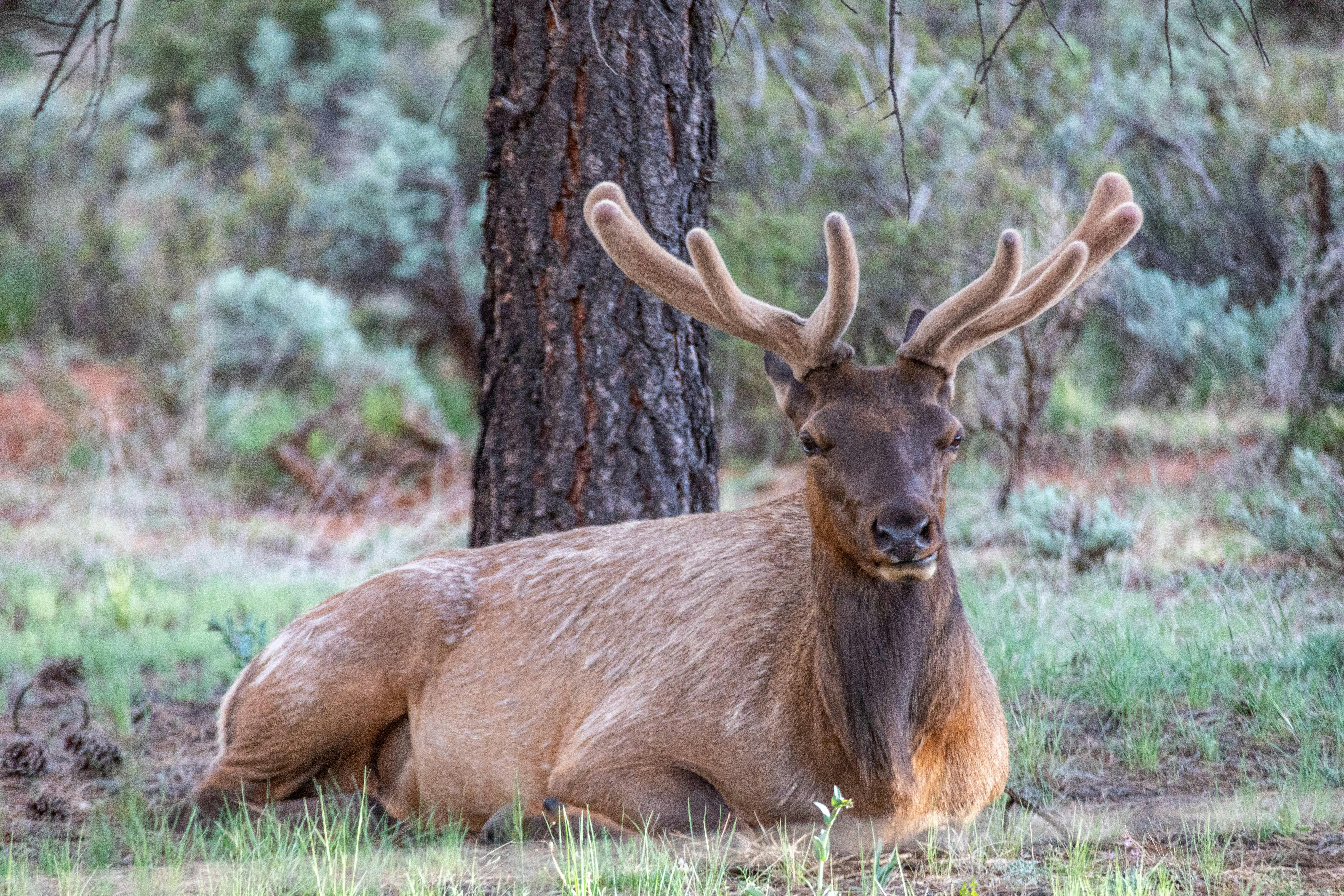
For centuries, the Cohonina people used the natural dead-end canyon to corner prey and hunt. There are hundreds of pictographs (ancient drawings) and petroglyphs (ancient carvings) scattered around this unique site. The Cohonina people drew these images over 1,000 years ago and are believed to be the ancestors of today’s Navajo, Hopi, and Zuni tribes. When visiting these ancient sites, please treat them with the utmost respect and refrain from touching or drawing on any of the walls.
